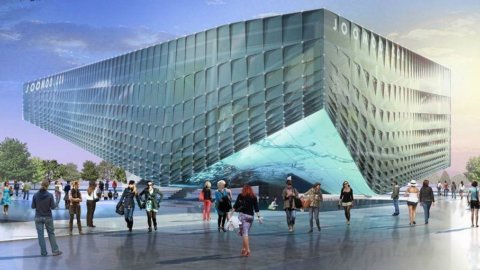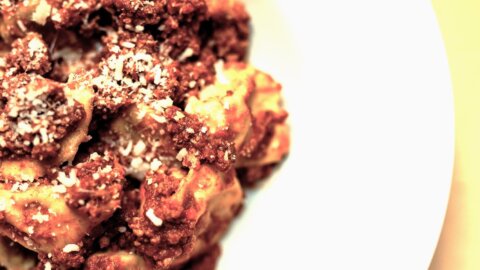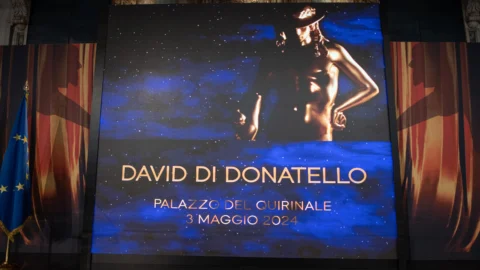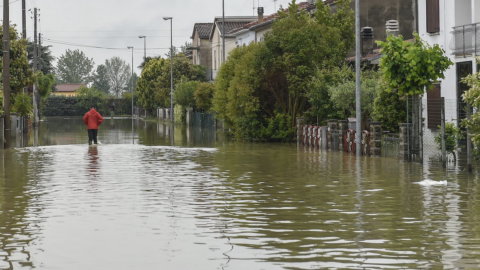Last February 19 we outlined the general profile of this extraordinary event. On March XNUMX with Accenture, the 6 March with Enel and FCA-CHN, the11 March with Intesa San Paolo and the 16 March with Tim, Finmeccanica and Samsung we presented the essential contributions to the success of the event that the eight are offering official global partners of Expo 2015. In addition to the official global partners other companies are present at Expo 2015. They are the so-called Corporate Participants. Companies, associations, institutions, which have presented a Theme Statement and have signed a Participation Contract with Expo 2015 SpA in order to be able to build, set up, manage and dismantle their own Pavilion, enhancing one or more aspects of the Theme of Expo Milano 2015. They have chosen to use the Universal Exposition as a stage to enhance the image of its brand among millions of visitors the China Corporate United Pavilion, the Kip International School, New Holland Agriculture, the Chinese real estate giant Vanke, the Chinese JooMoo, Federalimentare and Coca Cola.
The Chinese presence at Expo 2015 is truly massive. Distributed in four different pavilions, one official and three corporate, distinct but integrated with each other: the pavilion of China, the pavilion of the manufacturer Vanke, the China Corporate United Pavilion and that of the JooMoo group. Let's start our virtual visit from the official pavilion of China. One million visitors are expected from the distant land of the dragon, probably the most numerous foreign presence.
It's the first time that the China participates in a Universal Exposition with a self-built Pavilion, symbol of the commitment of a large country, the second world economy. For the first time, the country illustrates its agricultural policy in detail, from its history to the innovations of the future. Provinces and individual cities will also be present with numerous activities. The aim is to recall the belief of Chinese philosophy that "man is an integral part of nature", to show cultural traditions and progress in the fields of agriculture, to present the great strides made in the rational use of resources to ensure sufficient food, good and healthy.
"Just as the farmer takes care of and protects his land, so the people must protect the planet" summarizes the dedicated site. There are three themes around which the exhibition unfolds, on an area of 4.590 square meters, one of the largest of the Expo with sinuous shapes reminiscent of traditional pagodas "The gift of nature" illustrates the harvest process according to the Chinese lunisolar calendar and the five colors of the soil. “Food for Life” shows the production path of food, tofu and other dishes, the Eight Famous Chinese Cooking Schools, tea culture. “Technology and the Future” documents scientific advances, including Professor Yuan Longping's hybrid rice, recycling in agriculture, traceability techniques, the Internet of Things.
Second “place” made in China, the China Corporate United Pavilion which brings together over 20 companies in the technology, energy and food sectors, associated to be present in Milan as a single exhibition entity. Among them such giants as the Commercial Aircraft Corporation of China, Baosteel, Shanghai Electrics. Made with a steel structure, it covers an area of 1.270 square meters. It was designed by the Tongji Architectural Design and Research Institute of Shanghai. The designers were inspired by the theme of the Seed. “Under the name 'Seeds of China', the China Corporate United Pavilion interprets – thanks to the symbolism of the seed – the dream of a group of Chinese companies that want to be based on the values of conservation of natural resources and food safety” states the dedicated website. Themes such as “The Origin of Life”, “The Power of Growth”, “The Dream of Seeds”, “The Light of Life”, “The Cycle of Life”, “The Art of Culinary” and still others, to show the growth path and the role of the business world in relation to the rapid development that China has had.
But the Consortium also intends to take the opportunity of the Expo to move forward "to conquer" the city of Milan. In the plan that Stefano Mologni (deputy secretary general of the Executive committee of the China Corporate United Pavillion) is developing with the National Chamber of Fashion in Milan, the Maragoni Institute, the Altagamma Foundation, 10 Corso Como, the Embassy of Italy in Beijing and the Consulate General in Shanghai, there is a plan to launch a «China fashion day» in Milan in June 2015 (and another in September). In the heart of the fashion district, in via Montenapoleone, the consortium also has another project: a stage for young Chinese designers, artists and stylists. And finally, the idea of creating one is being studied House of Excellence in Piazzetta Liberty, a stone's throw from the Duomo: a showcase for the best food and fashion made in China.
Let's move on to the third Chinese pavilion, that of the giant Vanke, leader in the real estate sector. Founded in 1984, in 1991 it was the second company listed on the Shenzhen Stock Exchange. In just over 20 years, it has become China's largest residential construction company with operations in 53 medium to large cities in the Pearl and Yangze River Delta region, Bohai Economic Rim, as well as central and eastern regions of China. . In 2011 it sold apartments for 10,75 million square meters: an average of 60.000 houses a year. In 2012, it had revenues of more than 140 billion RMB (about 21 billion euros).
The pavilion, located near the Lake Arena, was designed by the architect's studio Daniel Libeskind of New York and from Libeskind Architecture of Milan, who conceived it as an extension of the surrounding landscape. The exterior of the pavilion will be entirely clad in red tiles, designed for the occasion by Libeskind and produced by Casalgrande Padana in a new eco-sustainable and self-cleaning ceramic material. Inside, the Vanke Pavilion will narrate Chinese history through a walk in a virtual forest made up of 300 screens that will project short films on the life of local communities, in whose everyday life the Shi-Tang (collective restaurant in Chinese) plays a fundamental role. The atmosphere of the Shi-Tang is recreated in the pavilion: much more than a simple canteen, it is an environment that represents a traditional social structure, present since ancient times that continues to exist in contemporary Chinese society in various forms. One convivial space, where you can find convenient food and a healthy and serene environment. Visitors find themselves immersed in a forest of poles, with screens projecting scenes of dining, joy, and sharing. The installation based on the metaphor of roots, trunks and branches symbolizes Vanke's commitment to the community, which lives thanks to the mutual relationships between people, values and traditions.
The fourth pavilion is that of the JooMoo group, a conglomerate active in real estate, energy, education and investments. In particular, it is very active in the world of the internet: it has an e-commerce platform specialized in cultural events. Among other things, he had the official task of promoting the Expo in Asia including ticket sales. It has branches in Italy, Malaysia, South Korea and Hong Kong. “Amazing Asia” is the name of the Pavilion. Designed by the Nemesi & Partners studio, the same as Palazzo Italia, it covers 864 square meters and is located in the Corporate area. It is inspired by the theme of water and consists of 5 levels. Inside, it houses the exhibition spaces of numerous Chinese companies, a double-height multifunctional hall, offices, meeting room, VIP area and a panoramic terrace with a green area on the roof which can host the numerous scheduled events on themes such as the innovative and creative economy, art andedutainment. And welcome cultural and artistic performances with prominent participants: music, crafts, art, design, films, cartoons, video games, art education workshops and workshops on tourism and technology.





